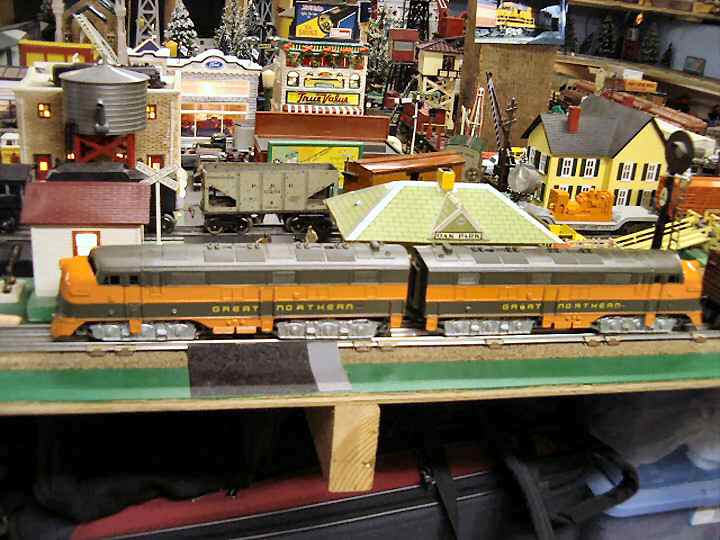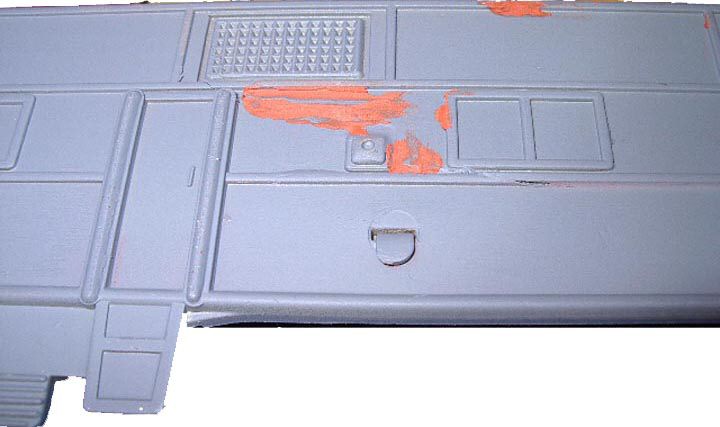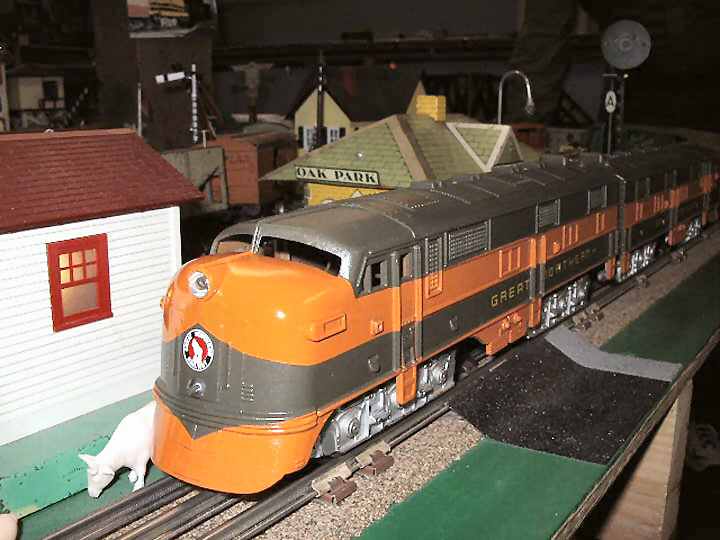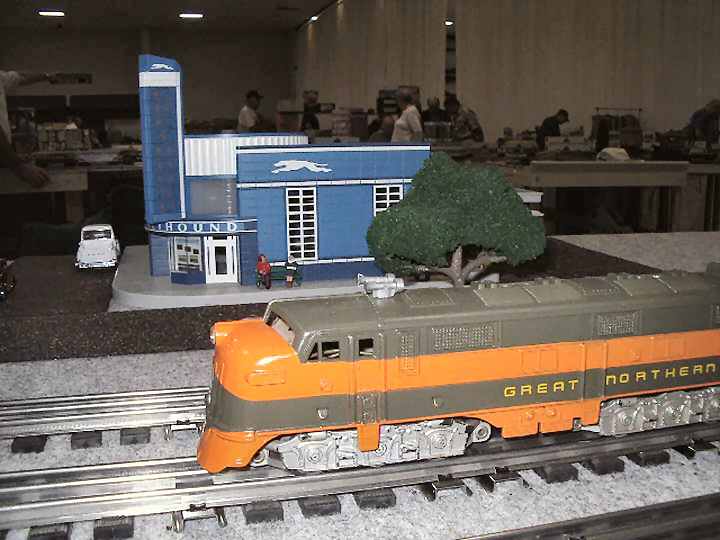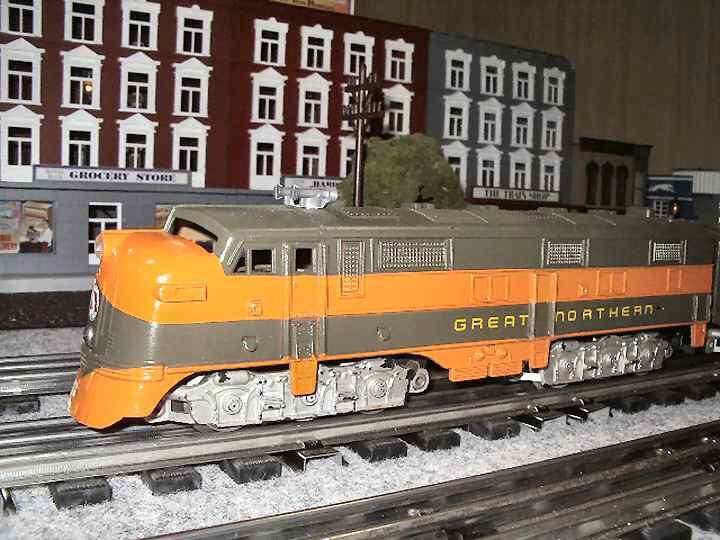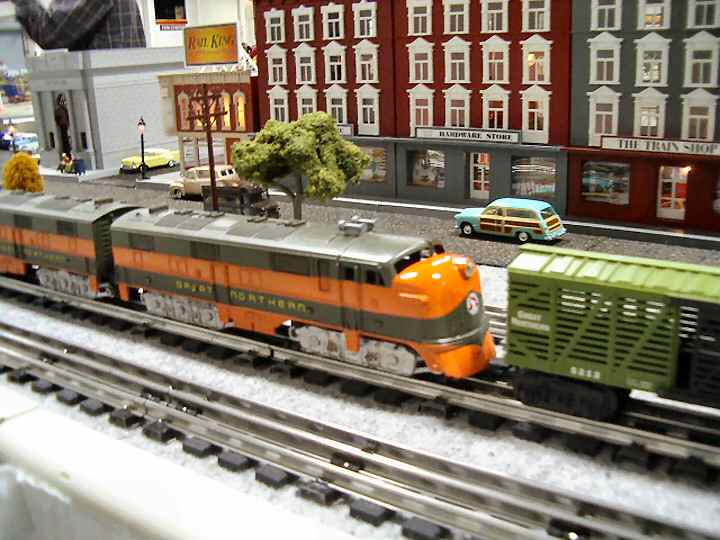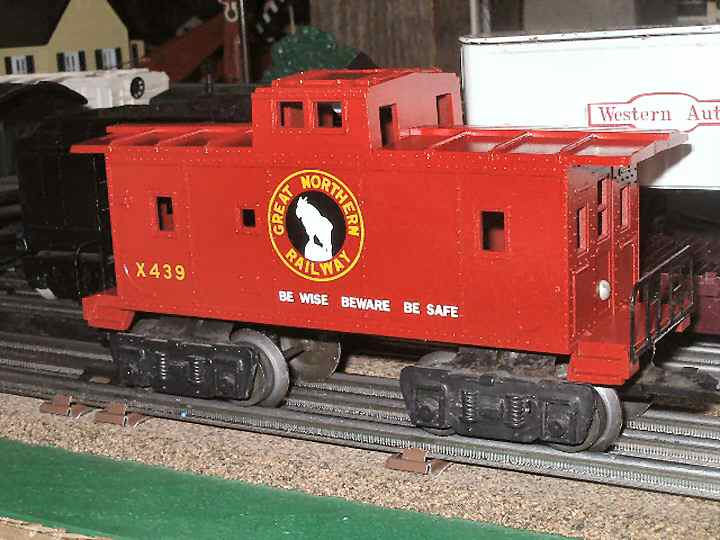Louis Marx gets an Empire Builder
By David Hess
As a Marx collector and operator, I have often wondered why more Western railroads were not represented in the numerous assortment of rolling stock and locomotives. I suppose that roads like the New York Central and the Pennsylvania were prominent in the population centers where most of the train sets were sold.
One such railroad that has little representation the Marx product line is the Great Northern. To my knowledge, only two plastic boxcars in the GN paint scheme were ever available. Note the lime green or dark green boxcar with fixed doors and the deluxe brown boxcar with opening door.
(Authors Note: Since the writing of this article, Ameritrains has produced a beautiful scale boxcar in green and orange.)
There were definitely no locomotives. How about repainting a Marx diesel? The Great Northern’s colorful Omaha Orange and Pullman Green would make a striking model. What follows are the steps I took in repainting two Marx 1095 diesels.
I am certainly not a professional painter, but I can get the job done. The purpose of this article is not to instruct you in proper painting and decal techniques, but to inspire you to take on your own project. I prefer to keep things inexpensive and simple. It makes sense to use spray paint where possible and save the harder to find colors for the airbrush. I prefer Krylon for the quality, fast dry time, and wide variety of colors, but other brands will do. Primer is essential on bare plastic or metal. Preparation for the project involved research of prototypical paint schemes, color choices, and the availability of appropriate decals. It is important to think the project through before you begin. For example, decal placement should be considered before even spraying the first coat of primer.
The two Great Northern Alcos began as a pair of cracked shell junkers at a swap meet. Both were A units and only one was powered. All cracks were repaired with Tenax-7R, a high quality plastic welding cement available through hobby shops. Broken steps were replaced with reproductions purchased from Robert Grossman, a company that specialized in parts for Marx. All voids were filled with spot putty and sanded smooth with 320 sandpaper.
The red war bonnet paint was feathered with sandpaper to hide any paint lines. Sandpaper was also used to rub out the “SANTA FE” on the sides of the locos. In order to provide a flat place to install the “goat” heralds, I decided to remove the lower headlight on the diesels using a motor tool and file. It is important at this step, to make sure that all trucks and couplers are complete and working. In addition, it is a good time to clean up the motor, ensuring that the powered unit operates smoothly in forward and reverse.
Remove the headlight lens as well as the screw that holds the headlight assembly. After masking off the trucks, I applied a coat of Krylon 1318 gray primer. Carefully examine the shell for smoothness and use more spot putty if necessary.
When I was convinced that the shells were smooth enough for paint, I sprayed orange on the shell for a base coat, concentrating on the nose and the middle strip. It is not important to get too much orange on the roof. Krylon 2410 Safety Orange turned out to be a great match for Omaha Orange. Making sure that the orange was dry, it was time to mask the loco for the green stripe, back, and roof. I found a ¼” masking tape at a local auto parts store that did a nice job of making the curve around the nose.
The idea here is to mask off everything that you want to remain orange. The rest of the shell gets a coat of Krylon 8143 Olive Drab, a good match for Pullman Green. Since Olive Drab is a camouflage color, it has a flat sheen, so remember to use a layer of Testor’s Glosscote under the areas where there are decals.
I chose two sets of Microscale O scale decals to finish the locomotives. Great Northern 48-370 was exactly what I was looking for. I carefully cut out the “goat” herald and two “GREAT NORTHERN” strips and applied them to the shells using Microscale’s Micro Set decal setting solution. After the decals were dry, I coated both locos with Testor’s Glosscote to protect the decals and provide a uniform sheen. At this point, I unmasked the trucks and put the diesels into service. To my satisfaction, the project was finished. There was a temptation to super detail the locos as I would have done in my scale days. Sure, one could add antennas, grab irons, and the like, but to do so would take away from the look of Marx. My desire was to create a pair of diesels that Marx might have made and I believe that it has been achieved. Some times less is more! Give it a try!

